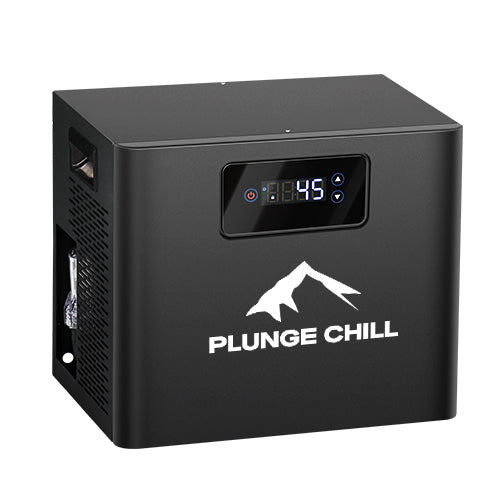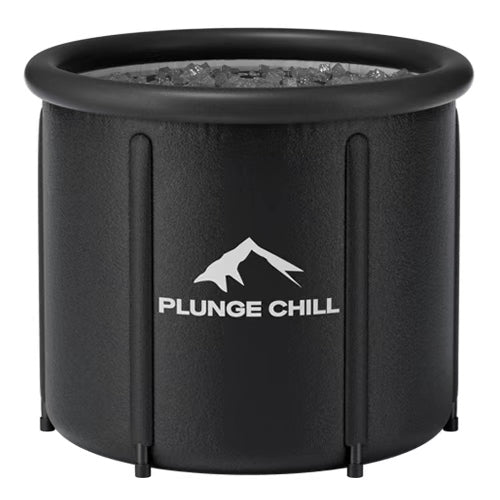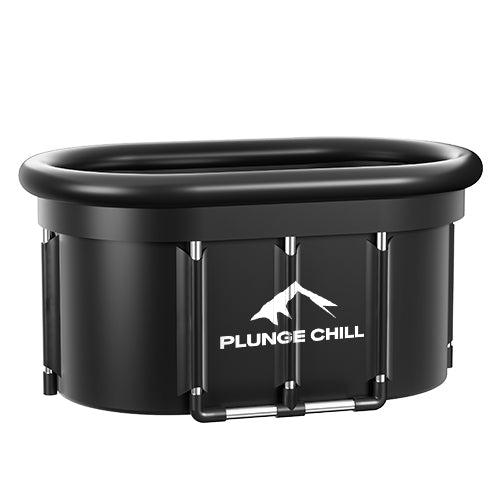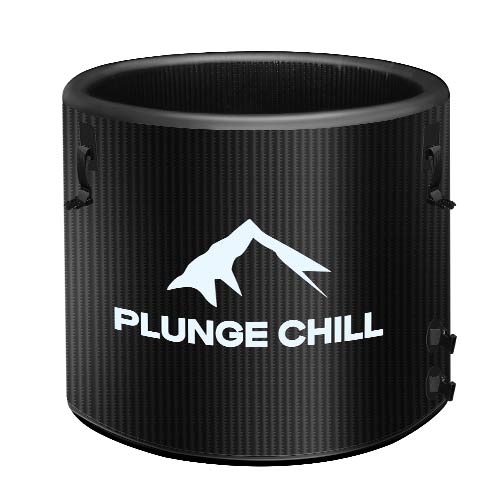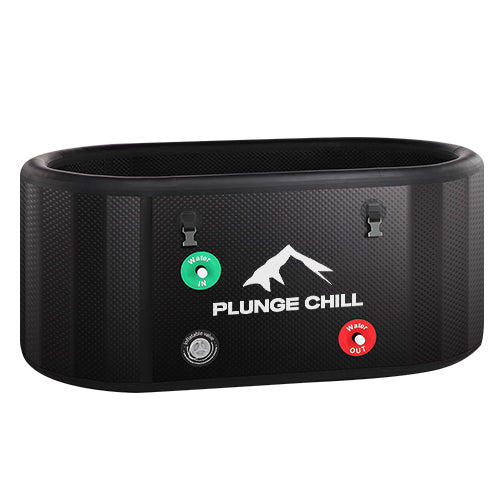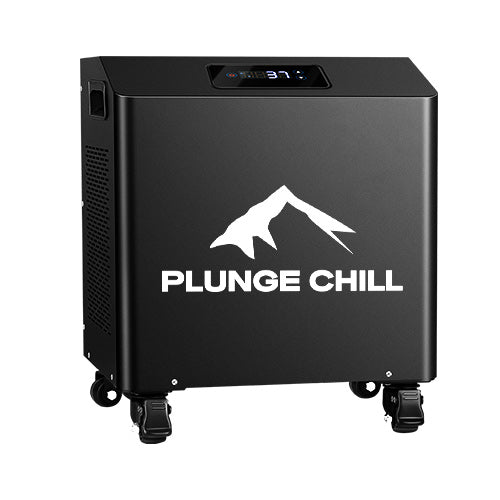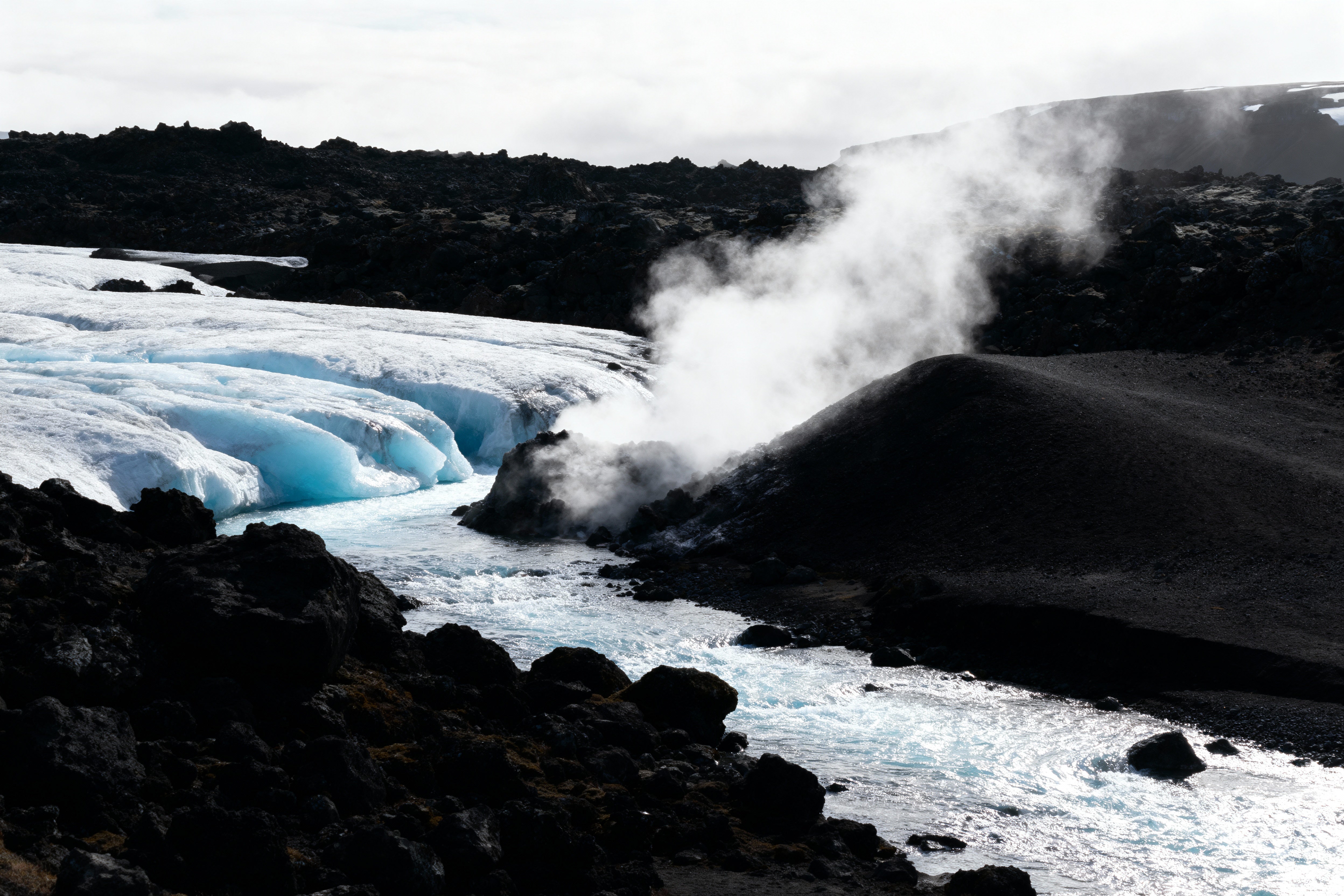Iceland is uniquely suited to hydrothermal recovery and contrast bathing. As a sports rehabilitation specialist and strength coach who reviews cold plunge products and programs hot–cold protocols for athletes, I consider the country a living laboratory: magma-heated waters vent alongside glacial rivers, fjords, and wind-chilled lakes.
The proximity of hot and cold sources invites intelligent, safe use of temperature as a training and recovery variable rather than a novelty. This article explains the geologic “why,” identifies where hot and cold harmonize in practice, and translates Iceland’s bathing culture and etiquette into evidence-informed, actionable guidance for travelers, athletes, and home cold-plunge buyers.
Why Iceland Has Both Hot and Cold Springs, Often Side by Side
Iceland straddles the Mid‑Atlantic Ridge, where rising magma heats groundwater to create natural hot springs, fumaroles, and geysers. 57hours describes more than 700 geothermal sites used for energy, and notes that roughly 85% of homes are heated via geothermal systems. At the same time, Iceland’s glaciers, high‑latitude climate, and extensive coastline supply cold sources everywhere: snowmelt streams, sub‑Arctic lakes, and the North Atlantic itself. Guide to Iceland highlights areas like the Hengill system south of Þingvellir with both warm pools and named cold pools such as Köldulaugar.
A subtle but important definitional gap explains why sources disagree on counts. 57hours refers to geothermal “sites” or reservoirs, while Iceland.org lists about 45 named hot springs when speaking specifically of recognizable springs for visitors. The discrepancy likely reflects different definitions (reservoirs versus individual named bathing springs), sampling scope (nationwide energy fields versus soakable features), and purpose (energy reporting versus traveler guides). This difference does not indicate error so much as different lenses on the same hydrothermal landscape.

What Counts as Hot, What Counts as Cold, and What Sits Between
Within Iceland’s bathing culture there are four practical categories. Community swimming pools are municipally heated year‑round and function as social hubs, a point emphasized by 57hours. Natural hot springs are raw and unregulated; temperatures can be comfortable or dangerously high, and conditions change with weather. Geothermal pools are man‑made basins fed by hot groundwater but deliberately mixed down to a safe temperature. Geothermal spas are upscale complexes with services, restaurants, and hotels. Cold sources are equally diverse. They include fjords and beaches such as Nauthólsvík where the sea meets hot water infrastructure, cold tubs built into spas like Krauma, cold lakes used by facilities like Vök Baths, and explicitly named cold pools in geothermal zones such as Köldulaugar.
Etiquette ties the system together. Adventures.is underscores pre‑soak nude showering and hygiene because many pools lack chlorine. The cultural logic is simple: if everyone washes thoroughly, the water stays clean for everyone else.
Where Hot and Cold Coexist in Practice
Landmannalaugar, a favorite of hikers, shows the mechanism in plain view. Warm water from geothermal fields mixes with a cool stream, yielding a large, natural pool whose feel changes with air temperature and flow. 57hours reports summer access and typical soaking temperatures in the upper 30s Celsius, with remoteness limiting winter travel. The take‑home for athletes is that mixing dynamics are real; a pool that is ideal at noon in July may feel tepid by evening winds.
Reykjadalur offers a similar but riverine experience. 57hours notes posted thermometers and sections that can be too hot to enter. The practical coaching rule here is to “walk the river” and choose a zone where the inflow of cooler water, air temperature, and flow give a safe and effective dose. A higher, steamier stretch might be ideal for a five to eight minute hot interval, whereas a shaded bend a few meters downstream can become your neutral or cool down.
Krauma in the west blends 212°F output from Deildartunguhver with cold glacial water, creating precise contrasts within one facility. Reykjavík’s Nauthólsvík shows another model: a shallow warm pool and hot tubs adjacent to cold sea water. Guide to Iceland notes summer seawater around 59–66.2°F inside the rock fence, with a hot tub at roughly 86–102.2°F and a warm basin at around 100.4°F. Hvammsvík’s shoreline pools vary widely—Nordic Visitor cites a rough span from about 50°F to 107.6°F—with the fjord offering an immediate cold immersion only steps away. Hveravellir, between Langjökull and Hofsjökull, even presents seasonal bathing that can range from cool to warm within the same site, according to Guide to Iceland’s geothermal overview.
An overlooked factor many travel write‑ups miss is how municipal pools extend contrast options beyond famous sites. 57hours emphasizes that pools are as common as grocery stores and operate year‑round with hot tubs and, increasingly, cold options. For a performance‑oriented traveler, this means reliable morning or evening sessions to supplement a day’s hike or soak, not just a one‑off spa visit.

Temperatures, Sites, and How to Use Them
These representative temperatures, drawn from the sources cited, illustrate the range and the hot–cold pairings Iceland makes possible.
|
Site or Feature |
Typical Temperature |
Hot/Cold Context |
Notable Mix |
Source |
|
Seljavallalaug |
68–95°F |
Warm, can feel cool in wind |
Geothermal trickle in a mountain pool |
Iceland.org; 57hours |
|
Reykjadalur thermal river |
~95.9–104°F in soakable sections |
Warm–hot; variable by section |
Gradient along the river; posted thermometers |
57hours |
|
Landmannalaugar pool |
~96.8–104°F |
Warm–hot |
Warm inflow + cool stream |
57hours |
|
Nauthólsvík seawater lagoon |
~59–66.2°F in summer; hot tub 86–102.2°F; warm basin ~100.4°F |
Cold sea + hot tubs |
Purpose‑built contrast in city limits |
Guide to Iceland |
|
Hvammsvík shoreline pools |
~50–107.6°F |
Full‑range contrast |
Pools exchange with the fjord |
Nordic Visitor |
|
Hveravellir bathing pool |
~46.4–102.2°F seasonally |
Cool–warm |
Highly variable by season and inflow |
Guide to Iceland |
|
Mývatn Nature Baths |
~96.8–104°F |
Warm–hot |
Silica‑rich; spa setting |
57hours; Well+Good Travel |
|
Drangsnes seaside tubs |
~100.4–107.6°F |
Hot with ocean cool‑off nearby |
Walk to the sea to cool |
Guide to Iceland |
|
Deildartunguhver (no bathing) |
~206.6–212°F source water |
Hazard if approached |
Energy source for Krauma |
Iceland.org; re.is |

Physiology and Performance: Turning Geography Into a Safe Protocol
Heat dilates peripheral vessels and relaxes musculature, while cold produces vasoconstriction and a brisk sympathetic response. Those are expected physiologic reactions, and they translate into perceived relaxation and alertness during alternating exposures. iamiceland.com describes warm‑water effects on muscles, circulation, skin, and stress, and notes that minerals such as sulfur and silica are commonly present in geothermal bathing sites such as Mývatn or spa lagoons. In my own work with athletes, I use Icelandic‑style settings to program short hot intervals for relaxation, followed by brief cold exposures for arousal and symptom‑guided pain modulation. Exact minute‑by‑minute dosing is individualized, but many respond well to hot soaks in the upper 30s Celsius for several minutes followed by cold immersions that feel “bracing but manageable,” with two or three alternations and a neutral warm‑down before leaving.
One overlooked insight is that rivers and fjords create moving‑water cold that feels markedly different from still‑water cold at the same thermometer reading. Current increases convective heat loss, so a 53.6°F fjord immersion at Hvammsvík or a shaded river bend near Reykjadalur can feel more intense than a 53.6°F still tub. That helps explain why some travelers report discomfort at “moderate” temperatures in natural settings while tolerating similar numbers in a home plunge. The likely cause is increased flow and wind exposure rather than measurement error.

Safety, Hygiene, and Etiquette You Cannot Skip
Adventures.is is unequivocal: shower naked with soap before bathing, because many pools are unchlorinated and hygiene keeps them safe for the next person. Locals also expect quiet relaxation and careful behavior around natural edges. Guide to Iceland underscores that some features are truly boiling, such as vents and mud pots, and to bathe only in designated pools. iamiceland.com adds the obvious but often ignored point that “some pools are too hot to bathe—admire safely.” The most reliable approach in wild settings is to test water at entry, read posted warnings, and watch for unstable or scalded ground.
A frequently shared social‑media claim warns of elevated E. coli in certain unsupervised pools. The notes include a Facebook group post that attributes measurements to Icelandic health authorities, but without a formal citation, the signal remains anecdotal. That said, the mandatory pre‑shower practice is not a formality: it materially reduces contamination in low‑chlorine waters and is non‑negotiable in Icelandic culture.
Off‑trail shortcuts and off‑road driving are also off the table. Annatee.co emphasizes Leave No Trace principles and notes closures caused by misuse. EcoHubMap and OECD sources discuss the need for infrastructure and visitor dispersal to protect popular sites. In performance terms, none of this is theory. Moss damage and trail erosion alter run‑down routes, increase fall risk for tired legs, and reduce the very access athletes come to enjoy.

Trip Planning for Contrast Seekers
Near Reykjavík you can build a safe, high‑quality contrast session without a long drive. A morning or evening at Nauthólsvík pairs a hot tub and warm basin with the cold sea only steps away; showers, changing facilities, and short walks make it controllable. On days with time to spare, Sky Lagoon or municipal pools add another hot set with structured cold options. On the Reykjanes Peninsula, Krauma‑style mixing of very hot geothermal water with cold glacier water creates precise temperature stations; in the north, Vök Baths demonstrates a different approach by seating thermal pools within a cold lake for true immersion contrasts.
When heading into wild settings, plan for variables. Landmannalaugar is summer‑only by 4×4 or seasonal bus, so its natural mix is a seasonal privilege. Reykjadalur requires a hike, and wind accelerates cooling as you towel off; bring a thermal layer and footwear you can step into with wet feet so your cold interval ends in comfort rather than shivering. Hveravellir’s seasonal range means a traveler in September might get a cool‑warm session rather than classic hot–cold; the contrasting effect can still be produced by stepping out into mountain air before returning to the pool.
Benefits and Trade‑offs: A Quick Comparison
|
Modality |
Typical Use in Iceland |
Potential Upsides |
Key Risks and Mitigation |
Source Context |
|
Hot soaking (96.8–104°F) |
Mývatn, Landmannalaugar, community hot pots |
Muscle relaxation, perceived stress reduction, social connection |
Overheating, hypotension; limit sessions and hydrate |
57hours; iamiceland.com; Guide to Iceland |
|
Cold immersion (sea, lakes, 46.4–66.2°F common) |
Nauthólsvík, fjords near Hvammsvík, lake edges near Vök Baths |
Perceived arousal, brisk analgesia, contrast pairing |
Cold shock, slip hazards; slow entry, supervised settings |
Guide to Iceland; Nordic Visitor; re.is |
|
Alternating hot–cold (contrast) |
Seaside pools, spa complexes with cold tubs |
Symptom‑guided recovery and alertness between sets |
Overdoing duration; end warm to avoid post‑session chills |
Professional practice; facilities’ posted guidance |
Buying and Caring for a Home Cold Plunge: Practical Guidance From the Field
There is no single “Iceland in a box,” but you can emulate key aspects safely. As a reviewer, I prioritize temperature accuracy, reliability, and sanitation over aesthetics. Rigid tubs with integrated chillers offer steady 37.4–50°F operation, useful for short contrast intervals. Inflatable options are portable but struggle to hold low temperatures in warm rooms. Stock tanks with external chillers can work well if you commit to filtration and cleaning. Pay special attention to drainage and indoor condensation control so you are not trading recovery for moisture problems near gym equipment.com/blogs/hub/cold-water-baths-weight-loss-misconceptions">ozone or UV units.
Care is unglamorous but decisive. Treat water with a system designed for bathing tubs rather than improvising with pool chemicals, clean filters on schedule, and fully drain and wipe down biofilm‑prone areas. Athletes should test the actual water temperature at each session rather than relying on display values; inexpensive probe thermometers catch real‑world drift. Contrast doses should start conservative and remain symptom‑guided, exactly as you would do when stepping into a chilly fjord beside a hot pool for the first time.

Cultural, Environmental, and Access Considerations
Hidden Iceland notes that the country is a climate hotspot where glaciers are retreating; EcoHubMap mentions a recent tourist tax earmarked for infrastructure and a 2040 carbon‑neutral goal. OECD emphasizes balancing access with protection. Iceland Review adds context around energy infrastructure, protected areas, and the paradox of abundant renewables alongside fragile ecosystems. As a visitor seeking hot–cold contrasts, respect the mandatory showers, accept that some places cannot be entered, pack out everything you bring in, and choose operators and sites that invest in maintenance rather than merely monetizing demand. This stewardship mindset keeps the very contrasts you value available to the next traveler and the next team who comes to train.
A subtle insight often omitted in consumer guides is that many premium spa experiences are physically downstream of power generation. re.is describes how geothermal plants heat cities and, in places like the Blue Lagoon and Krauma, create bathing opportunities through controlled mixing or byproducts. The likely reason many guide summaries miss this is that trip planning is framed around destination experiences rather than energy systems. Remembering the energy–water link clarifies why water chemistry varies across sites and why temperatures in a “natural‑feeling” spa are impressively stable compared with wild rivers.

Definitions That Keep You Safe
A hot spring is groundwater heated geothermally that reaches the surface. A geothermal pool is a man‑made basin filled with hot groundwater, often mixed with cooler sources for comfort and safety. A geothermal spa is a facility that layers services and amenities on top of pools, from restaurants to saunas and hotels. A cold spring or pool in Iceland can be a truly cold groundwater source, a cold tub built into a spa, or the North Atlantic or lake water adjacent to heated basins. A geothermal area contains multiple features such as fumaroles, mud pots, and vents; you do not bathe there unless there is a designated pool with explicit signage allowing it.

Hygiene and Safety in Everyday Language
Think like a teammate sharing a resource. Shower fully without your swimsuit before you enter; rinse again afterward to remove geothermal minerals. Leave glass at home. Respect private land and marked paths. Read every sign, and when in doubt, do not enter. Adventures.is stresses that attendants will enforce rules; treat that as a kindness rather than a barrier. If you feel lightheaded after a hot soak, step out slowly and sit. If you begin shivering uncontrollably in cold water, end the session and rewarm calmly rather than gritting your teeth for a timer. Your goal is repeatable sessions, not a single heroic story.
Short FAQ
Is it safe to alternate between hot springs and the sea on the same visit?
Yes when done in designated areas with showers and lifeguards or attendants, as at Nauthólsvík or spa complexes referenced by Guide to Iceland and re.is. Start with short exposures, end warm, and avoid alcohol before or during sessions.
Can I count on online temperature reports for wild pools?
Treat them as snapshots. 57hours and Iceland.org report different numbers for the same sites at different times, likely because of season, weather, and flow. Carry a thermometer and adjust on site.
Are claims about mineral waters healing skin conditions accurate?
Consumer sources such as iamiceland.com describe skin benefits from sulfur and silica. Responses vary by person and condition.
What is the right cold‑plunge temperature for recovery after training?
In practice I aim for “bracing but controlled” cold in the low teens Celsius for short intervals, paired with warm soaks in the upper 30s. Individual tolerance, goals, and health status dictate dosing.
Why do some “hot springs” feel lukewarm?
Sites like Seljavallalaug are fed by gentle inflows and exchange heat with air and groundwater. Wind, rain, and meltwater can drop temperatures below soak‑warm ranges, as reflected by the wide values reported by multiple sources.
Takeaway
Iceland’s collision of volcanism, glaciers, and ocean delivers a full palette of temperatures that can be paired for recovery, reflection, or simple pleasure—often within a single cove or valley. The best sessions respect the land and the culture: shower first, bathe only where permitted, read conditions in real time, and finish warm. If you bring the same diligence to a home cold‑plunge setup that you would to a windy pool in the Highlands—accurate temperature, clean water, controlled durations—you can reproduce the essence of Iceland’s hot–cold contrast anywhere, and arrive ready to savor it when you finally step into the steam and the sea.
References
- https://commons.erau.edu/cgi/viewcontent.cgi?article=1078&context=student-works
- https://digitalcollections.sit.edu/cgi/viewcontent.cgi?article=1003&context=por
- https://www.fs.usda.gov/rm/pubs/rmrs_p026/rmrs_p026_054_063.pdf
- https://research.fit.edu/media/site-specific/researchfitedu/coast-climate-adaptation-library/europe/iceland-amp-the-faroe-islands/Icelandic-Ministry-of-the-Environment.-1997.-Second-Status-Report-U.N.-CC-Framework-Report.pdf
- https://www.iceland.org/geography/hot-spring/
- https://www.savingiceland.org/2017/08/icelands-troubled-environment/
- https://www.oecd.org/content/dam/oecd/en/publications/reports/2017/10/sustaining-nature-based-tourism-in-iceland_83ba4ab1/f28250d9-en.pdf
- https://sustainablebusinessmagazine.net/eco-review/iceland-ecotourism-sustainable-nature-tours-now/
- https://hvammsvik.com/?srsltid=AfmBOoonyyI9Fh0vf7YJ1JcWoHLtp24lJ7XASc21XBf6VqSvGQEUTbfA
- https://wakeupreykjavik.com/must-visit-natural-hot-springs-in-iceland
Disclaimer
The information provided in this article is for informational and educational purposes only and is not intended as medical advice or as a substitute for professional medical advice, diagnosis, or treatment. The author is a sports rehabilitation specialist and strength coach, not a medical doctor. The views and opinions expressed in this article are those of the author and based on their professional experience and interpretation of the cited research.
The content of this article discusses physiological processes related to metabolism, brown adipose tissue, glucose regulation, and training adaptations. Always seek the advice of your physician or other qualified health provider with any questions you may have regarding a medical condition (such as diabetes, cardiovascular disease, or metabolic disorders) or before starting any new health or wellness practice, including cold water immersion. Do not disregard professional medical advice or delay in seeking it because of something you have read in this article. Reliance on any information provided in this article is solely at your own risk.
